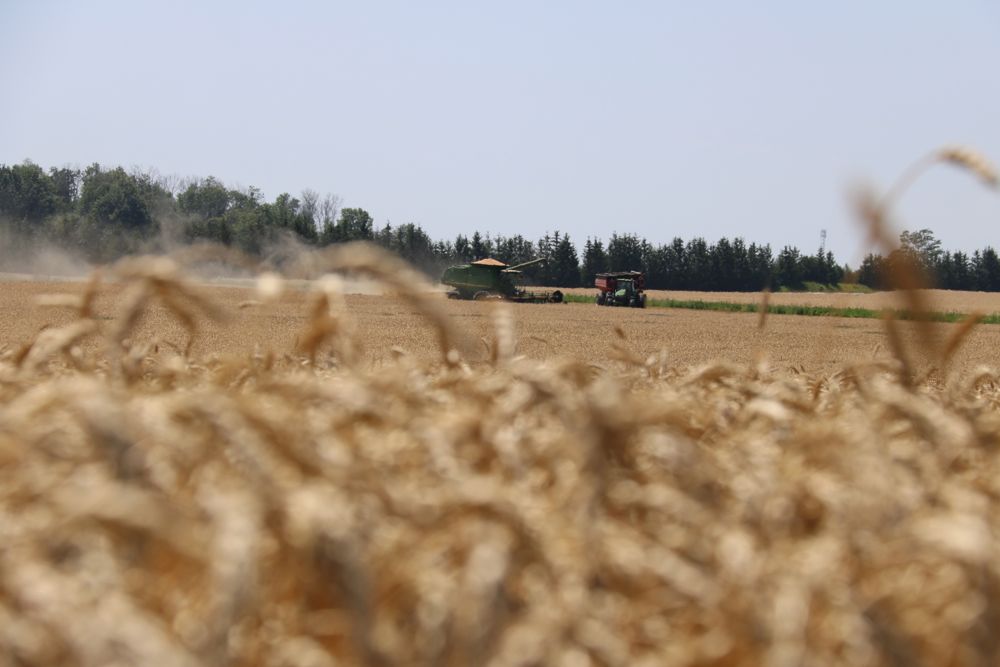Everybody likes to plant corn. At least it sure seems they do, and with $7 cash prices dancing in the collective memory of many eastern Canadian farmers, it’s hard to blame them.
Corn prices have retreated from 2011’s highs, but as we look toward spring 2012, corn planters are poised to roll again.
The question is, is it time to scale back our enthusiasm?
The conventional wisdom in farm country is that, all things being equal, farmers will choose corn over soybeans or any other row crop. A large part of the reason is that modern corn hybrids have shown they can tough it out, year in and year out, and when the season is at all decent, they can hit it further out of the park than any other crop out there.
Read Also

Could crop sharing be a viable option for your farm?
Crop sharing could be a good option for young and beginning farmers.
Seed companies have inserted both biotech and improved conventional traits into new corn hybrids, so they not only fight pests like the European corn borer and western bean cutworm, they also thrive and pump out the bushels across a wider and wider range of weather and field conditions.
But that’s what is happening in the real world. What happens in the market often seems so very unreal. At least, it can be based on psychology, not just science and the fundamentals of supply and demand.
Will the fundamentals of supply and demand change rapidly in 2012, and if they do, will those changes affect prices to the farmer?
The difficulty of farming in 2012 is that once you start asking such questions, you have to keep asking more. Will politicians stick to their guns on ethanol support? Will non-agricultural investors keep pouring their billions into grain markets? Is weather likely to dominate the market?
These are only some of the questions that corn producers may have to ask as they make plans for the coming spring.
To answer them, lets start by taking a harder look at what happened to the market in late 2011. Since the end of August, corn futures have lost almost $2 a bushel — a significant drop caused mainly by noncommercial speculators leaving agricultural commodities. This in turn was caused partly because of the uncertainty that was generated by the sovereign debt woes within the European economy.
So it’s no surprise that as we look ahead to 2012, many corn producers are wondering almost as much about non-agricultural markets as they are about basic grain supply-and-demand fundamentals.
With the price of corn retreating by those two dollars in late 2011, you might think the fundamentals don’t matter any more. Adding muscle to that argument is the fact that the USDA supply and demand report in December 2011 pegged the U.S. corn stocks-to-use ratio at 6.7 per cent, which is still the lowest in history except for this past summer.
Under such a tight scenario, how could prices fall?
As we look into 2012, part of that answer may have been provided by that same December report. The USDA pegged global corn production for 2011-12 at 867.5 million tonnes (mmt). Corn production outside of the United States is estimated to be 43.4 mmt higher than last year with China’s production up 7.3 mmt at a forecast 191.8 mmt for this crop year.
World ending stocks rose from 121.6 mmt to 127.2 mmt. The simple fact is that corn ending stocks, both in the United States and globally, increased in late 2011.
Corn physical supplies may be tight in some areas of North America but it is clear that higher prices from early 2011 have encouraged production worldwide — which, according to the textbooks, is exactly what high prices are supposed to do.
Meanwhile, the 2011 U.S. corn crop was below average, with the December USDA report pegging it at 146.7 bushels per acre on 83.9 million acres. That puts production at 12.310 billion bushels, compared to total corn usage at 12.605 billion bushels.
Ethanol was the largest component of that with corn usage, coming in at five billion bushels. Feed use followed at 4.6 billion bushels.
That said, corn usage was actually down from the previous year, easing off to 13.066 billion bushels. Again, the text book theories are in force. High prices not only increase supply, they choke demand.
It’s true that supply and demand may not have been affected as much as we might have predicted, but the signals are there.
So what happens next? Will the market in 2012 depend on the weather? Or will there be other important factors that may lead to explosive price movement — upward or downward — before the 2012 crop is in the bin?
Are the bears solidly in control of the grain-marketing playing field? In other words, should corn producers act defensively in 2012 against further price drops?
Yes, as we noted in the introduction to this article, everybody likes planting corn but good things don’t necessarily last forever. The ups and downs of the price cycle are a natural part of agriculture, and a natural part of the corn market.
Not all is bleak, however. Part of the foundation for improved corn price prospects in 2012 will be seen if noncommercial speculative demand comes back into agricultural commodity markets. Speculative demand consists of ETFs (Exchange Traded Funds), investment funds, index funds and many other types of financial instruments. The exit of noncommercial speculative demand was the main reason for the price drop in late 2011, and as we said, it was caused partly by uncertainty surrounding the sovereign debt problems in Europe.
We all need to be watching this speculative demand, and also watching for any other issues that might limit the participation of the spec funds in the corn market.
Darin Newsom, a senior grain analyst with Telvent/DTN of Omaha, Nebraska, believes that world demand for corn will continue to grow, but he also believes that noncommercial demand is crucial to buoyant price movement.
However, Newsom also says we should be keeping our eye on the U.S. dollar. That’s a market that the spec funds will be following very, very closely, he says, because if the U.S. dollar continues to gain value, the funds may not be able to reap the profits they are looking for in the grain market.
When the U.S. dollar was lower, it was much easier for the spec funds to make money. Basically, they were making money on the corn market, and also making money on the currency market in the same play.
It will be much more unlikely that they will be able to forecast those returns if the greenback continues to gain in value. Agricultural commodity futures prices typically go down when the U.S. dollar goes up and vice versa.
So, although a return of the noncommercial speculative demand in the corn market would be welcome, it’s not necessarily guaranteed, even if Europe starts to get it fiscal house in order.
Newsom also draws parallels between the demise of MF Global, the large U.S.-based brokerage firm, which filed for Chapter 11 bankruptcy in 2011, and the movement of noncommercial speculative capital into grains. When investors see that MF Global can run aground in the grain market, it’s a warning that corn may be too risky for non-industry players to mess with.
Besides, we certainly aren’t out of the woods with regard to Europe. At the very least, the EU has to look forward to an economic path fraught with pain. At worst… well, it could be much worse than what we’ve seen so far.
Excessive sovereign debt financed by European banks has become a vicious circle and it has the potential to continue causing instability in world capital markets. This sort of pattern usually results in capital buying in U.S. securities, and this in turn raises the U.S. dollar — which as we have said is usually a negative for agricultural commodity prices.
These European issues will not go away easily or in the short term, meaning a constant flux for currency markets, and this has an all too real potential to affect Canadian cash prices for corn.
The success of the U.S. ethanol industry has been a major factor in corn prices rising over time. Who would have ever believed that in 2011 there would be more ethanol produced from corn to be burned in automobiles than would be used for feed? However, that is exactly what is taking place now.
Ethanol profitability is based on a combination of the price of ethanol, corn, oil and gasoline prices — and available subsidies. Although some U.S. subsidies ran out at the end of 2011, ethanol demand has a solid base.
The same is true in Ontario, where the Ontario Ethanol Growth Fund continues to subsidize each litre of ethanol produced from designated plants.
The challenge for Canadian corn growers is to measure the profitability of corn on their farm. Rotational concerns are always paramount in the farm management process. Clearly though, the spectre of 200 bushels per acre at healthy prices in 2012 may trump everything.
In Ontario in 2012, there may be more than two million acres of corn if the crop gets in the ground on a timely basis.
But we all know that there’s a long way between hope and reality. Just because we want to get that much corn in the ground doesn’t mean that we automatically will.
In fact, a big corn acreage may be a considerable challenge, given the wet conditions of the fall of 2011 and whatever the winter months bring. Certainly, 2011 wasn’t an easy planting season.
Regardless, let’s hope 2012 is a real corn year. Big yields are good news, whichever way the market goes. CG














